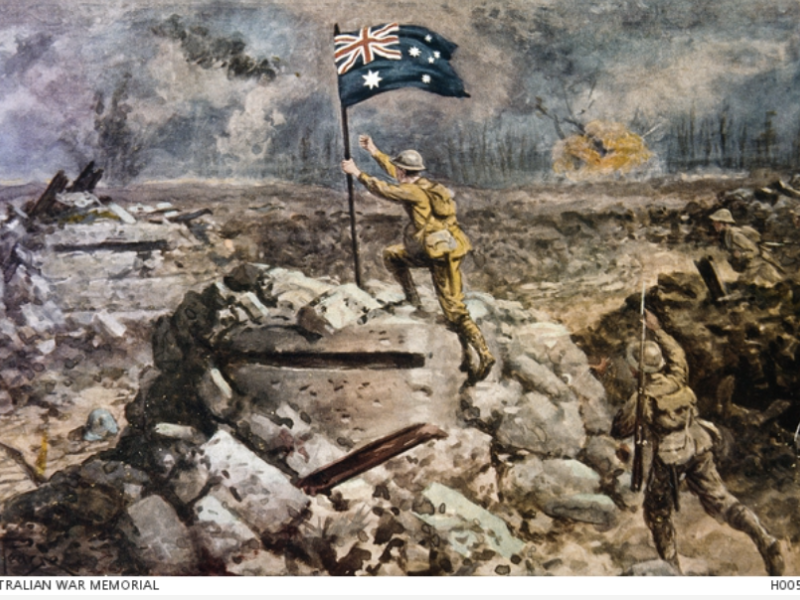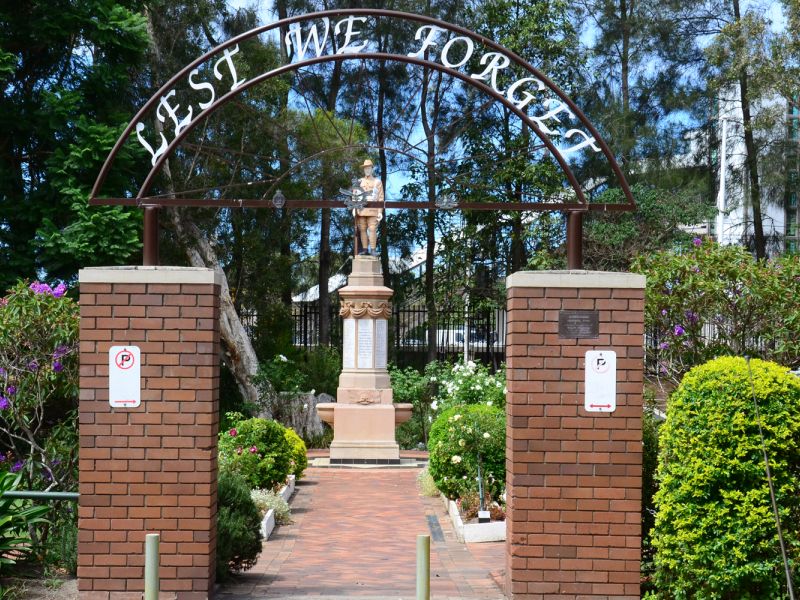Lance Corporal John Logan, 18th Battalion, AIF
John Logan was born in 1889 in Ormiston, Scotland, the eldest of two sons to John and Elizabeth Logan. In 1911, aged 22, he emigrated to Thirroul on the New South Wales south coast.
In December 1915, Logan enlisted in the Australian Imperial Force. In March 1916, he embarked from Sydney to join the 18th Battalion in France.
Logan and his unit rotated between the front line and the rear, holding the line and training. The winter of 1916–1917 was the coldest in living memory.
In January 1917, Logan was promoted to the rank of lance corporal. In early 1917, the Germans withdrew to a stronger position known as the Hindenburg Line. The 18th Battalion followed up this retreat with heavy fighting at Warlencourt in February.
In May, the 18th Battalion took a key part of the Hindenburg Line at Bullecourt. Though successful, there were heavy casualties.
Later in 1917, the 18th moved north to Belgium to recapture the high ground in Flanders. The battalion fought in two battles, collectively known as the third battle of Ypres: in September at Menin Road, and in October at Poelcappelle.
Logan worked as a stretcher-bearer, a dangerous role moving wounded soldiers back to medical stations, often through areas of heavy fighting.
Logan’s unit stayed in a relatively quiet sector of the French–Belgian border during the winter of 1917–1918. The AIF had suffered enormous casualties during 1917. As the weather warmed up and the ground hardened, static trench fighting turned into movement.
In March 1918, the German army launched the Spring Offensive. It would be the final major assault of the war. They wanted the rail hub city of Amiens, effectively splitting the British in the north from their French allies in the south.
British and Australian forces managed to halt the offensive in April at Villers-Bretonneux, 30km from Amiens.
In early April, the 18th was in the front line at Villers-Bretonneux, targeted by German artillery and machine-gun fire. At the end of the week, they were relieved and moved to Gentelles, behind the front lines. The battalion’s war diary noted that the civilian population had evacuated, so there was plenty of straw for the men to sleep on, and they had their first decent sleep for over a week.
At 6am the next morning, 9 April 1918, the men were awoken by a German artillery barrage falling on Gentelles. Logan was struck by shrapnel and killed instantly. He was 29 years old.
John Logan is buried in Hangard Communal Cemetery Extension in France, with over 550 Commonwealth soldiers of the First World War. His mother had his headstone inscribed with the epitaph “Until we meet again”.
His fiancée, Subina Ethel Victoria Round, was left devastated in Australia, as was his mother, Elizabeth, in Scotland.
In July 1918, Elizabeth received news that her other son, Private Peter Logan of the 1st Battalion Gordon Highlanders, had also been killed in action on the Western Front.
Thomas Rogers, Historian, Military History Section
Image: The Battle of Polygon Wood, Belgium, 1917, from Original Drawing by A. Pearse, War Artist, c.1920
- Australian War Memorial https://www.awm.gov.au/collection/AWM2019.1.1.295

 Australian War Memorial
Australian War Memorial